|
|
|
You can get e-magazine links on WhatsApp. Click here
|
|
|
|
|
|
Potato as a source of starch: Indian scenario
|
|
Friday, 16 October, 2015, 08 : 00 AM [IST]
|
|
Madhusweta Das
|
|
fiogf49gjkf0d Starch is an important commodity for various food and non-food applications. Industrial production of starch exhibits a growth rate of ˜ 4% per annum. Potato starch and its derivatives have some special properties and are preferred over other starches in some specific applications. Globally, corn is the most widely used raw material for isolation of starch. India is the second- largest potato producer, contributing 12% to the world production. India’s cold storage facility can accommodate about 50% of her production. Therefore, potato as resource for starch extraction can be encouraged in India.
Starch is composed of two types of polysaccharide molecules, amylose and amylopectin, which normally occur in a ratio of ˜1:3, by weight. Starch accumulates as discrete granules in the cytoplasm of cells in the seeds, tubers, roots, and stems pith of a number of higher plants, and act as reserve polysaccharide, the size and shape of the granules being plant-specific1. A few representative examples2 of them are shown in Fig. 1. Diameter of granules of some industrially important starches, viz., corn, wheat, tapioca, rice and potato ranges within 5-25, 2-45, 4-35, 3-8, and 15-100 ?, respectively1. A number of post-harvest processing as milling, separation, purification, etc., are required to disrupt the cell structure for isolation and collection of the starch. The granules remain essentially intact during most of the processing required for extraction of starches. Isolated starch can be modified further physically and/chemically to alter its functional properties.
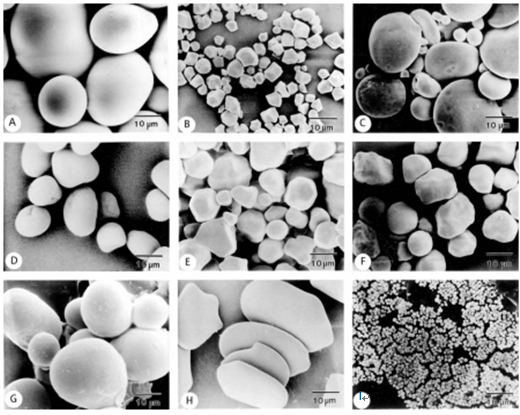
Fig. 1- Scanning electron micrographs of starch granules from nine different botanical sources: A, potato; B, rice; C, wheat; D, mung bean; E, corn; F, waxy corn; G, tapioca; H, shoti; I, leaf starch. Magnification 1500X for each starch.
Almost all major industries have some applications of starch and modified starch; total food application being 54% (e.g., canned food, baked food, dry mix food, confection, snacks and breakfast cereals, meat, surimi, pet food, dairy products, fat replacers, resistant starch, etc.) and the rest 46% for non-food uses including adhesive, paper, textile, pharmacy, etc3,4. Global starch production in 2010 was 71 million tonne and, with a growth rate of approximately 4% per annum, is expected to rise to 85 million tonne in 20155. Potato starch and its derivatives exhibit some characteristics for which it is preferred in some applications over other starches6. India is currently producing appreciable amount of potato, but all the produce does not have access to cold storage facility7, 8. This article briefly discusses a comprehensive view of these facts with a focus to encourage use of potato for starch extraction in India.
Present status of raw materials in starch production
Commercial starches are obtained from cereal grains, particularly from corn, waxy corn, high amylose corn, wheat and rice, and from tubers and roots, particularly potato, sweet potato, and tapioca (cassava)1. Global starch production by raw materials9 is given in Table 1. The extraction and processing of starch from agricultural commodities is one of the most important agro-industries in India. Starch production in India is highly fragmented, a variety of manufacturers of small to large capacities producing variable grades and derivatives of starch from different sources. It is estimated that about 30 producers in India manufactured around 1.56 million tonne starch and its derivatives in 2012. The growth of the starch industry can be gauged by the fact that nearly 40 per cent of the total companies engaged in starch production are new entrants. While corn is the main raw material, to a much smaller extent, potato, tapioca and rice are also utilised10. However, to fulfil the requirements, India imported (Fig. 2) and still imports starch including potato starch11,12,13,14.
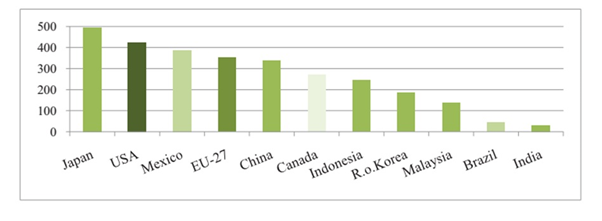 Fig. 2- Starch import values for the main world importers in 2008 (million US$) Fig. 2- Starch import values for the main world importers in 2008 (million US$)
Production and uses of potato
Potato is an annual plant that generally is propagated asexually from cut pieces of tubers. Potato is the fourth most important world food crop after wheat, rice, and corn15. Among the top five potato producing countries, India is the second-largest potato producer contributing 12% to the world after China recording 25.4%7. Potato is mainly a Rabi crop in India. Potato production in India16 is shown in Fig. 3. About 50% of potato produced in India has access to cold storage facility8. Besides this, most of such facility is established in six states. This implies that on an average 40-45% of the total production volume is kept under ambient conditions resulting in substantial post-harvest losses.
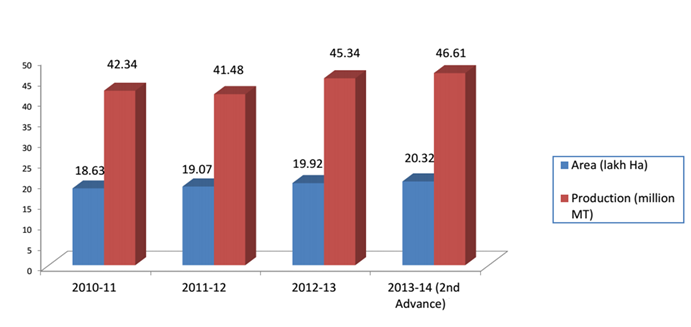 Fig. 3- Potato production in India
Fig. 3- Potato production in India
Potato is used for a variety of purposes. In fact, it is likely that less than 50 per cent of potatoes grown worldwide are consumed fresh. The rest is processed into food products and ingredients to be added to fabricated foods, fed to cattle and chickens, processed into starch for industry, and reused as seed tubers for growing the next season's potato crop. A compendium of different uses17 of potato is depicted in Fig. 4. In India, processing sectors constitute mainly potato chips, flakes and fries; starch manufacturing has recently been added to her repertoire10.
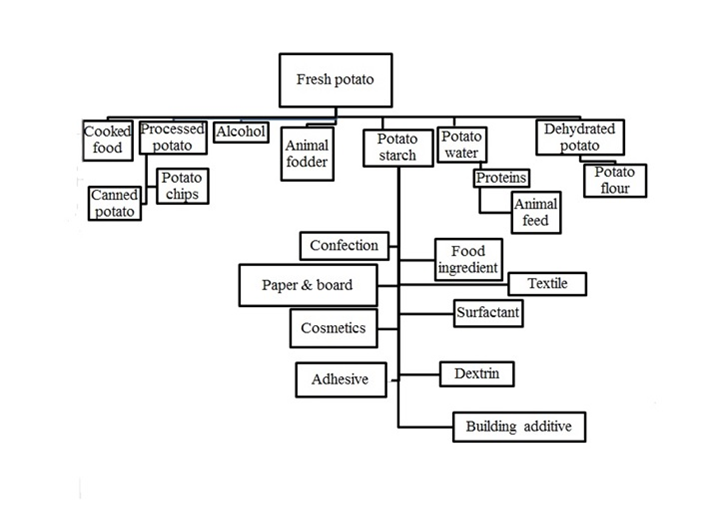 Fig. 4- Different modes of uses of potato Fig. 4- Different modes of uses of potato
Advantages of potato starch
Low gelatinisation temperature and high paste consistency (Fig. 5) of potato starch and its derivatives6 are the special characteristics preferred in food industry. It is further intensified by the facts that paste of potato starch has a good clarity (due to a small amount of lipids and protein)18 and a neutral flavour. There is also a preference of potato starch for the surface sizing and coating of paper19. The reason for this is the high molecular weight of its amylose and its good solubility. Cationic potato starches due to the concurrent presence of phosphate groups therein are desirable for internal sizing of paper. Potato starch dextrins have an advantage over other starches as an adhesive, because of the good remoistenability and a desirable rheology resulting in a perfect direct tack. Textile is manufactured better with potato starch due to its film properties, paste penetration depth and adhesive power. Potato starch, tapioca starch and waxy corn starch perform better than other starches in oil drilling, due to their excellent control over fluid loss properties20. The high phosphate content of potato starch is responsible for its special flocculation effects in mining and water treatment. Due to its large granule size, potato starch is also preferred as a precoat on filters. Extruded carboxymethylated potato starch is an excellent scale inhibitor in aqueous systems, being superior to other carboxymethylated starches21.
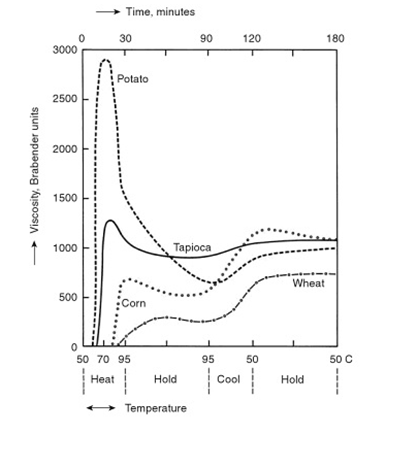 Fig. 5 - Brabender viscosity curves of 8% granular suspension of common starches Fig. 5 - Brabender viscosity curves of 8% granular suspension of common starches
Depending on the physicochemical properties, an overview of the average performance and preference21 of commercially available starches and their derivatives is given in Table 2. The suitability of the starches for these uses is indicated by +++ (particularly suitable), ++ (suitable) and + (less suitable). This may be highlighted that tapioca and potato starch properties are much valued in Asian food17.
Extraction process of starch from potato
The most commonly used industrial process for the extraction of starch from potato is shown in Fig. 6 and involves the following stages17, 22.
a) Fresh potatoes are first coarsely cleaned for removal of soil and stones. The main cleaning is done in trough washing machines where the potatoes are spinned and thoroughly washed with water. At this stage, any impurities adhering to potatoes are removed. Constant abrasion completely removes soil and most of the skin. The washing water is then pumped into clarification pools where sand, soil and stones are removed and the water is reused in the process.
b) The clean potatoes are then transferred to rasping machines where rows of saw blades are closely arranged on a drum which is rotated at high speed. Sharp saw teeth convert the potatoes into a fine mash thus opening up the tuber cells to release starch. The cell juice is rich in sugar and protein. When opening the cells, the juice is instantly exposed to air and reacts with the oxygen, forming coloured components, which may adhere to the starch.
Sulphur dioxide gas or sodium bisulphite solution therefore has to be added to the potato gratings23. A considerable reduction potential of the sulphur compounds prevents discoloration and any microbial growth. Sufficient sulphur is required to maintain the juice and pulp light yellow.
c) The pulp comprising the coarse skin and cell fragments are separated from the rasped potatoes. This separation step is conducted by means of conical rotating sieves, the centrisieves. For better starch isolation, water is applied to the sieves through nozzles. Powerful washing is needed to flush the starch granules out from the torn cells that form a filtering mat trying to retain the starch. While starch and fruit water (potato juice) pass through, the fibres (pulp) are retained by the sieves. Instead of water, washing can be carried in closed systems allowing the use of the potato juice itself. It has the advantage that the juice can later be recovered (mentioned below) in concentrated and undiluted form. The pulp is drained or pressed off and used directly as feed while still damp or dried in flash dryers. The pulp is used as mix feed because of its high feed value owing to its protein and residual starch content.
d) In the next step, the fruit water is separated in several steps by means of hydro-cyclone plants. About one half of the soluble proteins in fruit water is coagulated by treatment with acid and heat and then separated in decanters. The remaining fruit water is evaporated and used for fertilising.
e) Fresh water is introduced to raffinate the crude potato starch. Raffination removes the remaining impurities from the starch.
f) Refined starch milk has a dry matter content of about 35% to 40%. The starch is dewatered by rotary vacuum filtration to moisture contents below 40%. The centrifugal action in filtration helps to make extraction faster.
g) Drying is conducted by means of a flash dryer. Starch must not exceed 15% of residual moisture to be suitable for storage.
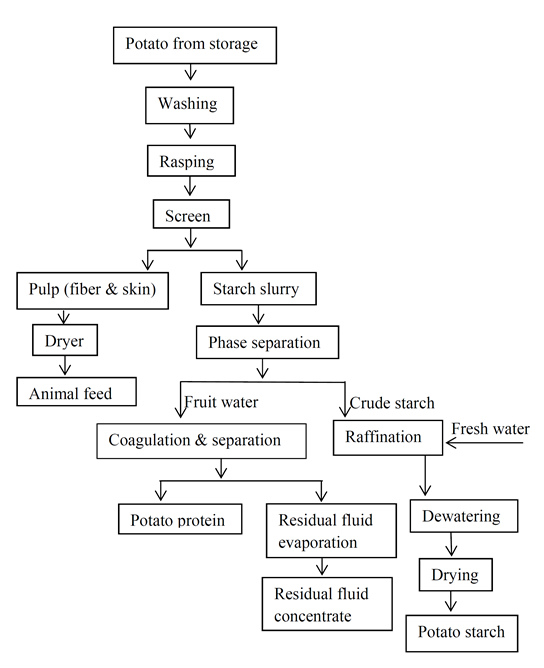 Fig. 6 - Potato starch extraction process Fig. 6 - Potato starch extraction process
Conclusion
Potato starch and its derivatives possess special characteristics leading to their high demand. Starch can be isolated from potato using a simple methodology. Efficient use of fruit water in starch isolation not only makes for additional value of the overall process in the form of more marketable protein, it also reduces the consumption of fresh water to minimise the effluent load and the energy costs of the entire process. India does not import any potato, but she imports potato starch. Presently, about 50% of potato produced in India has access to cold storage facility. Therefore, potato as resource for starch extraction can be encouraged in India.
Reference
1.Dias FF, Starch: Perspectives and opportunities, J Scientific and Industrial Research, 58 (1999) 403-413.
2.Robyt JF, Starch: Structure, Properties, Chemistry, and Enzymology, In: Glycoscience, edited by B Fraser-Reid, , K Tatsuta & J Thiem , (Springer-Verlag, Berlin Heidelberg), 2008, 1443. (DOI 10-1007/978-3-540-30429-6_35).
3.Mason WR, Starch use in foods, In: Starch: Chemistry and Technology, edited by JN BeMiller, & RL Whistler, (Food science and technology, International series, Academic press, USA), 2009, 773-788.
4.Askew MF, Opportunities and constraints on the exploitation of bioresources in Europe, In: Renewable Resources and Plant Biotechnology, edited by R Kozlowski, GE Zaikov, & F Pudel, (Nova Science Publishers, New York), 2006, 12.
5.Anonymous, Statistics Index 2014, International Starch Institute. (http://www.starch.dk/isi/stat/rawmaterial.asp 2015) (Accessed June 2015).
6.Biliaderis CG, Structural transitions and related physical properties of starch, In: Starch: Chemistry and Technology, edited by J N BeMiller, & RL Whistler, (Food science and technology, International series, Academic press, USA), 2009, 303.
7.Faostat, FAOSTAT data 2015. (http://top5ofanything.com/list/01880761/Countries-that-Produce-the-Most-Potatos) (Accessed June 2015).
8.Wustman R, Haverkort A, Zhang X & Rathee G (2011). An overview of the potato sector in India and prospects of Indo-Dutch cooperation, Wageningen, (Foundation Stichting Dienst Landbouwkundig Onderzoek (DLO) research institute, Praktijkonderzoek Plant & Omgeving) (https://www.wageningenur.nl/upload_mm/0/a/8/31a9e937-9467-4d53-8e41-29000524aada_3-India%20-%20Overview%20of%20the%20Potato%20Sector%202011.pdf) (Accessed June 2015).
9.Tereos International, Creating A Global Leader in Food Ingredients and Bioenergy, 2010. (http://www.slideshare.net/menezio/tereos-internacional-analyst-presentation) (Accessed June 2015).
10.Rajendran A, Untapped opportunities for the Indian starch industry. (http://www.fnbnews.com/article/detnews.asp?articleid=34744§ionid=32) (Accessed June 2015).
11.Anonymous, Evaluation of Common Agricultural Policy Measures applied to the Starch Sector, Final Report, AGROSYNERGIE, November 2010. (http://ec.europa.eu/agriculture/eval/reports/starch/chapter2_en.pdf) (Accessed June 2015).
12.Rajib P, Commodity derivatives and risk management, Eastern Economy Edition, (PHI Learning Pvt. Ltd., Delhi), 2014, 155.
13.Anonymous, Starch Import Data & Analysis (Seair Exim solutions) (http://www.seair.co.in/starch-import-data/analysis.aspx) (Accessed June 2015).
14.Anonymous, Potato starch imports data & import prices of potato starch under HS-11081300, Indian Trade Data – Online, (Cybex, Exim solutions (P). Ltd.) (http://www.cybex.in/imports-data-india/potato-starch-hs-11081300/fc-france.aspx) (Accessed June 2015).
15.Saxena DC, Satus of starch sources in India, their processing and utilization, (http://www.terawet.com/uploads/Starch_sorces___Processing_in_India.pdf) (Accessed June 2015).
16.ICAR, State-wise analysis of Production, Storage, Market arrival and Price trends for Onion and Potato, 2014 (http://nhm.nic.in/Archive/ICAR_5.pdf) (Accessed June 2015).
17.Dartways, Potato - The Hidden Treasure 2010, (http://dartways.com/business/10) (Accessed June 2015).
18.Harkema J, Starch derived fat mimetics from potato, In: Handbook of Fat Replacers, edited by S Roller & SA Jones, (CRC Press LLC. USA) 1996, 119-129.
19.Giract, Starch Industry Overview 2013, Starch Italics. (http://www.giract.com/food_industry_news/Starch%20Italics%20March-April%202013%20issue.pdf) (Accessed June 2015).
20.Kraak A, Industrial applications of potato starch products, Industrial Crops Products, 1 (1993) 107-112.
21.Grommers HE & van der Krogt DoA, Potato starch: Production, modifications and uses. In: Starch: Chemistry and Technology, edited by JN BeMiller, & RL Whistler, (Food science and technology, International series, Academic press, USA), 2009, 537.
22.Murray BC, Gross DH & Fox TJ (1994), Starch manufacturing: A profile, Final report. Research triangle institute, North Carolina (http://www.epa.gov/ttnecas1/regdata/IPs/Starch%20Manufacturing_IP.pdf) (Accessed June 2015).
Anonymous, Technical memorandum on potato starch 2014, International Starch Institute. (http://www.starch.dk/isi/starch/tm5www-potato.asp) (Accessed July 2015).
|
|
|
|
|
|
|
|
|
|